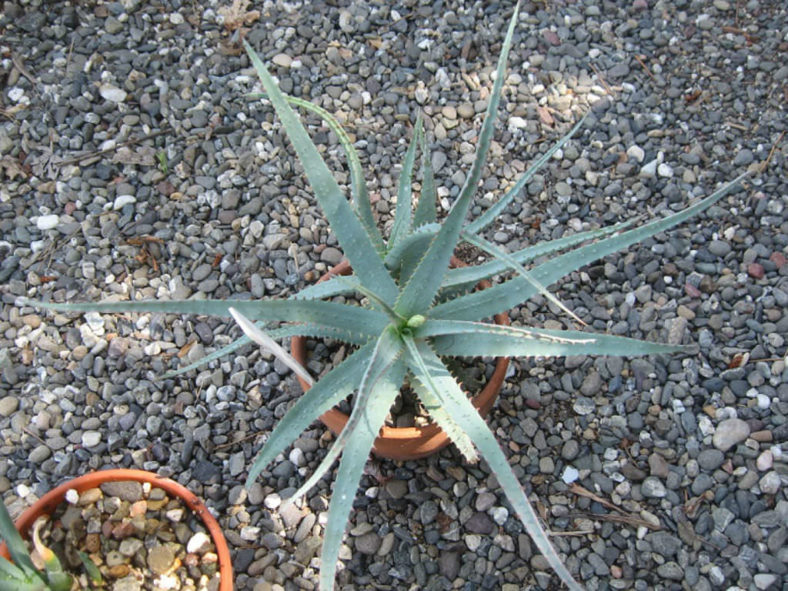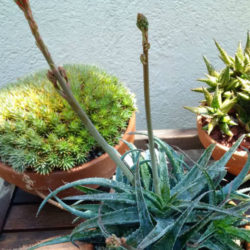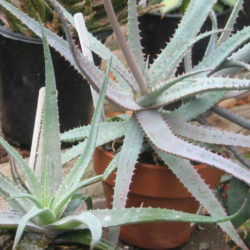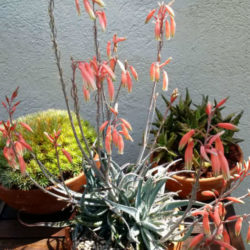Scientific Name
Aloe pseudoparvula J.-B.Castillon
Scientific Classification
Family: Asphodelaceae
Subfamily: Asphodeloideae
Tribe: Aloeae
Genus: Aloe
Description
Aloe pseudoparvula is an attractive succulent that forms flat, stemless rosettes of grey-green leaves with scattered pointed tubercles on the upper surface and small whitish teeth along the edges. It grows solitary or produces offsets to form a small clump of rosettes. The leaves are fleshy, narrow, up to 6 inches (15 cm) long, and often take on a pink hue.
The flowers are orange-red with yellow-white tips and appear in cylindrical racemes on simple or branched, up to 22 inches (55 cm) tall stalks in spring.
As the name suggests, this species superficially resembles Aloe parvula but has larger rosettes and different flowers.
Origin
This species is native to central Madagascar. It grows at elevation of about 3,940 feet (1,000 m).

Hardiness
USDA hardiness zone 9b to 11b: from 25 °F (−3.9 °C) to 50 °F (+10 °C).
How to Grow and Care
Aloes are very forgiving plants. However, as with all succulents, Aloe must never be allowed to sit in stagnant water, and the plant should be carefully monitored to watch for signs of overwatering.
Aloes are not particularly fast-growing and will only rarely need repotting. Repot plants in the spring that are tipping over their pots or have ceased growing. Use a fast-draining potting mix with one-third sand or pebbles. When repotting a larger plant, dividing the root ball carefully is possible. Some kinds of Aloe will send off off-sets that can be potted independently.
It needs intense, bright light. They can withstand full summer sun once acclimated. In the winter, provide bright light. It prefers warmer temperatures of 70 to 80 °F (21 to 27 °C) but will survive down to 40 °F (4.5 °C). Feed with a cactus fertilizer in the summer only. Suspend feeding in the winter as the plant goes dormant.
See more at How to Grow and Care for Aloe.
Links
- Back to genus Aloe
- Succupedia: Browse succulents by Scientific Name, Common Name, Genus, Family, USDA Hardiness Zone, Origin, or cacti by Genus
Photo Gallery
Click on a photo to see a larger version.



